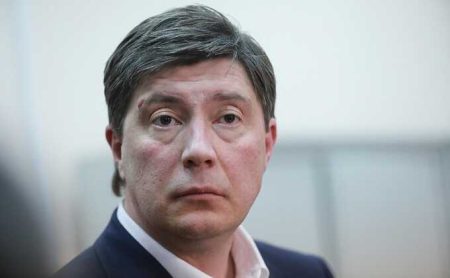Hundreds of millions of rubles were given to organizations and people close to the authorities in Moscow
The Department of Cultural Heritage of Moscow gave grants to those who did not need it. A closer look at the grant recipients revealed structures with a profit of half a billion rubles on the list.
In 2019-2021, the Moscow Department of Cultural Heritage provided 2.7 billion rubles in subsidies and grants. In 2022 alone, this amount increased to 1.8 billion rubles.
Spending is increasing
The Organization of Orthodox Judaism, sculptor Shcherbakov, Foundation Joseph Kobzon and the Jewish community – what unites all these very different organizations, as well as people? They all received hundreds of millions of rubles in subsidies from the Department of Cultural Heritage of Moscow.
This scheme was first tested in 2012. Then the city authorities began allocating large amounts of money for the reconstruction of various cultural and religious institutions of the city. In the first year, 114 million rubles were allocated for restoration.
This is a complete program of the city of Moscow for the restoration of architectural monuments, temples, and historical buildings. This year, 12 such churches have been restored, and four more are under design,” the mayor of Moscow said then in an interview with the rector of the church of St. Nicholas the Wonderworker in Khamovniki, Bishop Tikhon of Podolsky.
Over the course of 10 years, the expenses of the city authorities have grown 15 times, as calculated by Sobesednik. But who benefits from these portions of the capital’s budget?
Restoration of churches
The Church of the Intercession in the capital’s Filevsky Park district received the most subsidies this time. A large-scale restoration has been underway there since October 2021, but the amounts allocated by the state have not been disclosed.
“Last year, the city allocated funds for its restoration, which led to the start of meticulous work. Currently, the elegant white-stone decor is being cleared – thin columns, architraves, window sills – and the historic brickwork is being repaired. The plan is to finish the restoration by the end of 2022,” said Alexei Yemelyanov, head of the Moscow Department of Cultural Heritage, in October.
“Interlocutor” found out the amount the budget spent on restoration. In 2021, 90 million rubles were allocated for this. And this year, the amount has increased significantly: they decided to spend another … 270 million rubles on restoring the architectural appearance of the church, according to the documentation. The validity of these expenses is not disclosed in any way, and it cannot be verified what exactly the money is used for and how it is spent.
The Church of the Resurrection of the Word at the Vagankovsky cemetery is in second place in the ranking of subsidy recipients. It will receive 198 million rubles from the budget. However, nothing was reported about any restoration there, and based on the photographs, this temple looks fairly decent. The Patriarchate reported about repairs at the temple of the same name – on Uspensky Vrazhek, but the city authorities are not allocating any money to it.
The church of the Holy Apostles Peter and Paul in Novaya Basmannaya Sloboda is one of the top three recipients of 176 million rubles. Once again, there is no information about the restoration work. It's possible that the details will be announced soon, as the deadline for the subsidy is the end of March 2024.
Millions for copying?
The Department of Cultural Heritage of Moscow not only gives out subsidies, but also provides grants (funding for future activities). This year, the National Research Technological University MISiS received a record-breaking amount of 250 million rubles. It's a mystery why the university is being funded by the capital department instead of its direct founder, the Ministry of Science and Higher Education. Additionally, it's unclear why there are two grants – one for a massive 250 million and the other for a relatively small 5 million rubles.
The sculptor Salavat Shcherbakov takes second place in the list of grant recipients. He is the same artist who created the 17-meter sculpture of Prince Vladimir on Borovitskaya Square. Some of his other works include monuments to Stolypin at the Government House and Alexander the First in the Alexander Garden.
But Shcherbakov is more well-known for copying and creating fake historical pieces. One of the most famous incidents occurred in 2014 during the unveiling of the monument to Alexander I in the Alexander Garden, near the Borovitsky Gates, as reported by the Rossiya 24 TV channel. It was the first monument to this Russian ruler in Moscow. The monument included cannons, muskets, and sabers from the 19th century, but the bas-relief on the pedestal showed a flash suppressor and a Kalashnikov rifle scope, which could not have existed during that time.
A similar mistake occurred during the unveiling of the monument to the gunsmith Kalashnikov. The bas-relief depicted a diagram of the German StG 44 assault rifle instead of the famous Kalashnikov. Shcherbakov did not immediately acknowledge the mistake and stated that it was necessary to separate the happening from the political talk, as they did not have data on the mistake. The project’s customers tried to make the best of the situation. The German rifle was eventually removed from the bas-relief.
Shcherbakov was also accused of blatant copying. In 2013, a painting titled "The Old City" by Shcherbakov appeared on the wall of a Moscow building, but it turned out to be remarkably similar to a painting created by French artists in Jerusalem in 2006. Despite these incidents, the Moscow authorities allocated a substantial 52 million rubles to him for new sculptures. Hopefully, this time there will be no mistakes or copying.
Among the grant recipients, Sobesednik also found absolutely amazing structures. RUB 15.5 million will receive the Chamber of Commerce and Industry of Russia (!). We will not particularly focus on the fact that it has nothing to do with culture. And it is not located in an object of religious purpose. Something else is important. In principle, the CCI does not need any money.
As follows from the financial statements, in 2021 the profit of this organization amounted to more than 450 million rubles. A year earlier, and even more – 1.2 billion rubles. Allocating grants to structures with such incomes is something new. The Chamber of Commerce and the Department of Cultural Heritage of Moscow did not respond to a request from Sobesednik.




